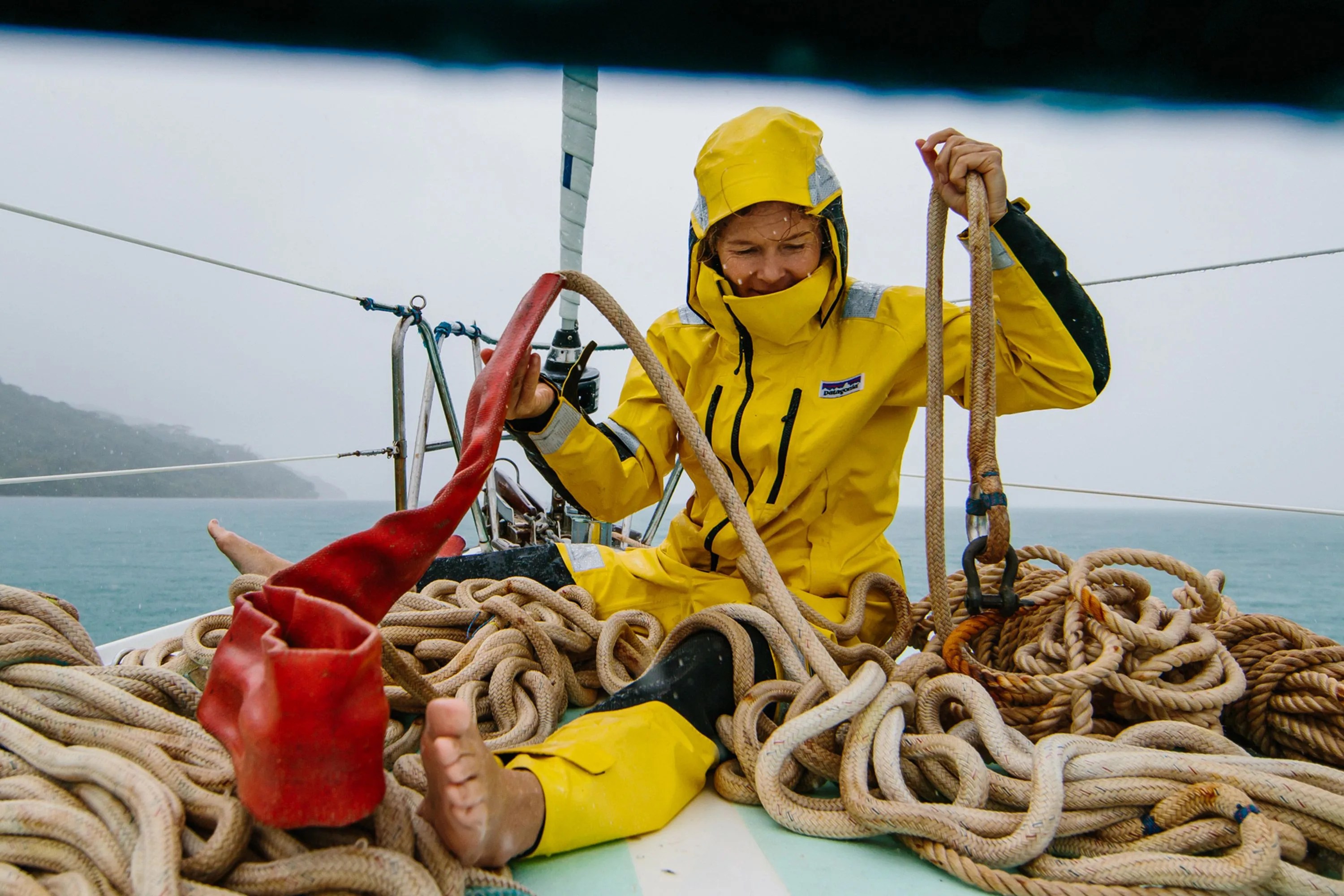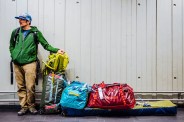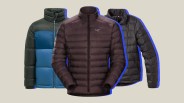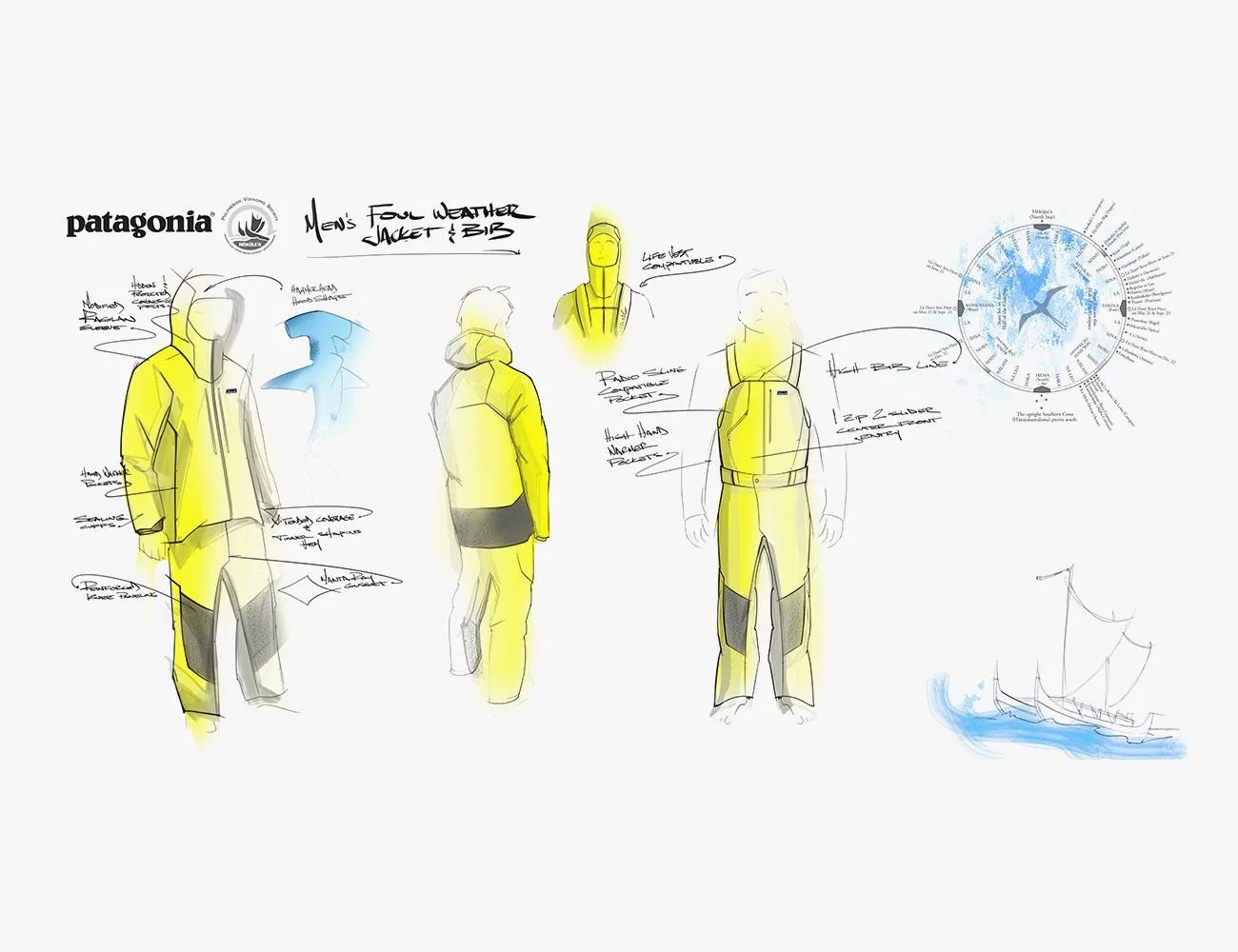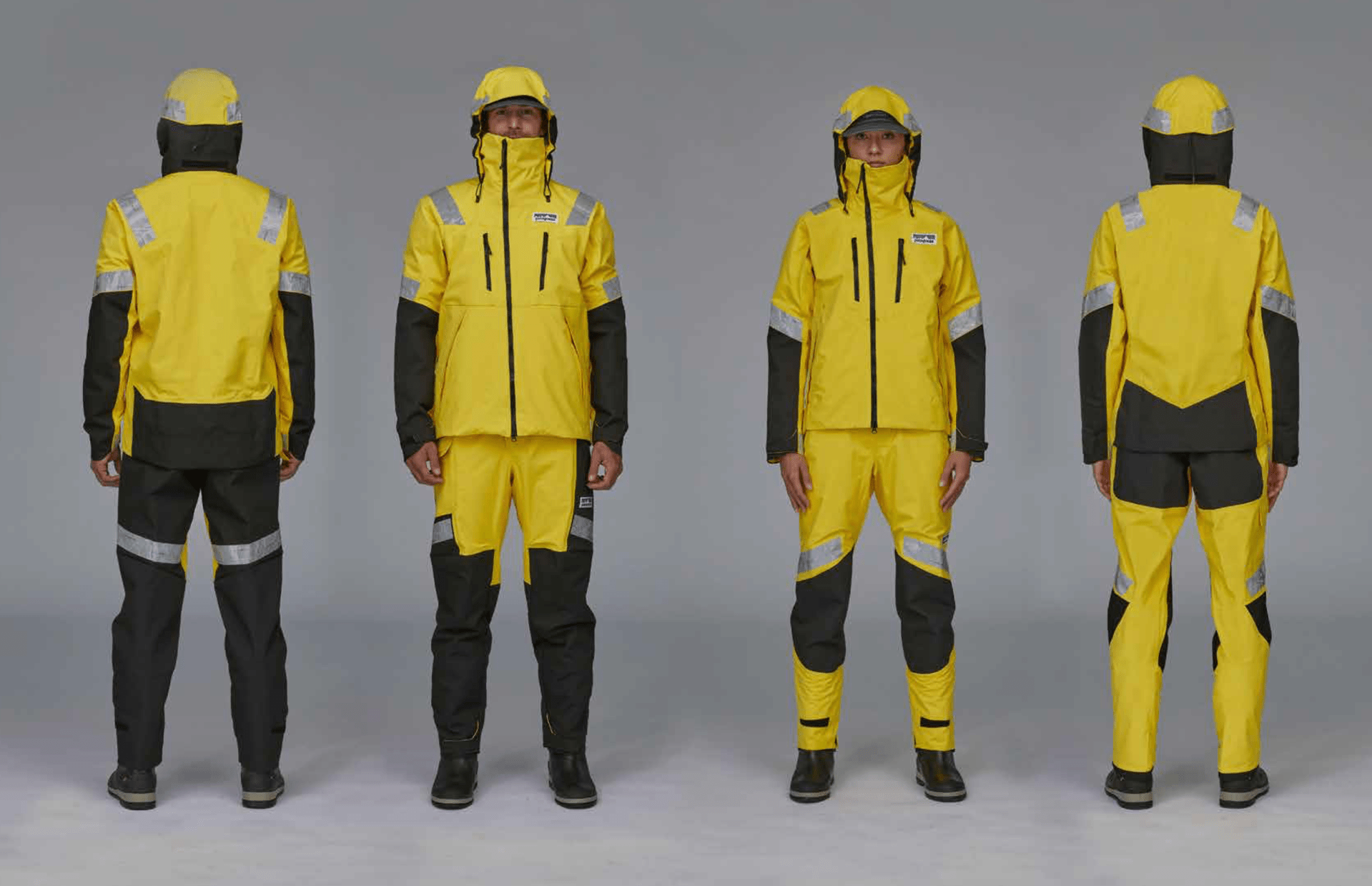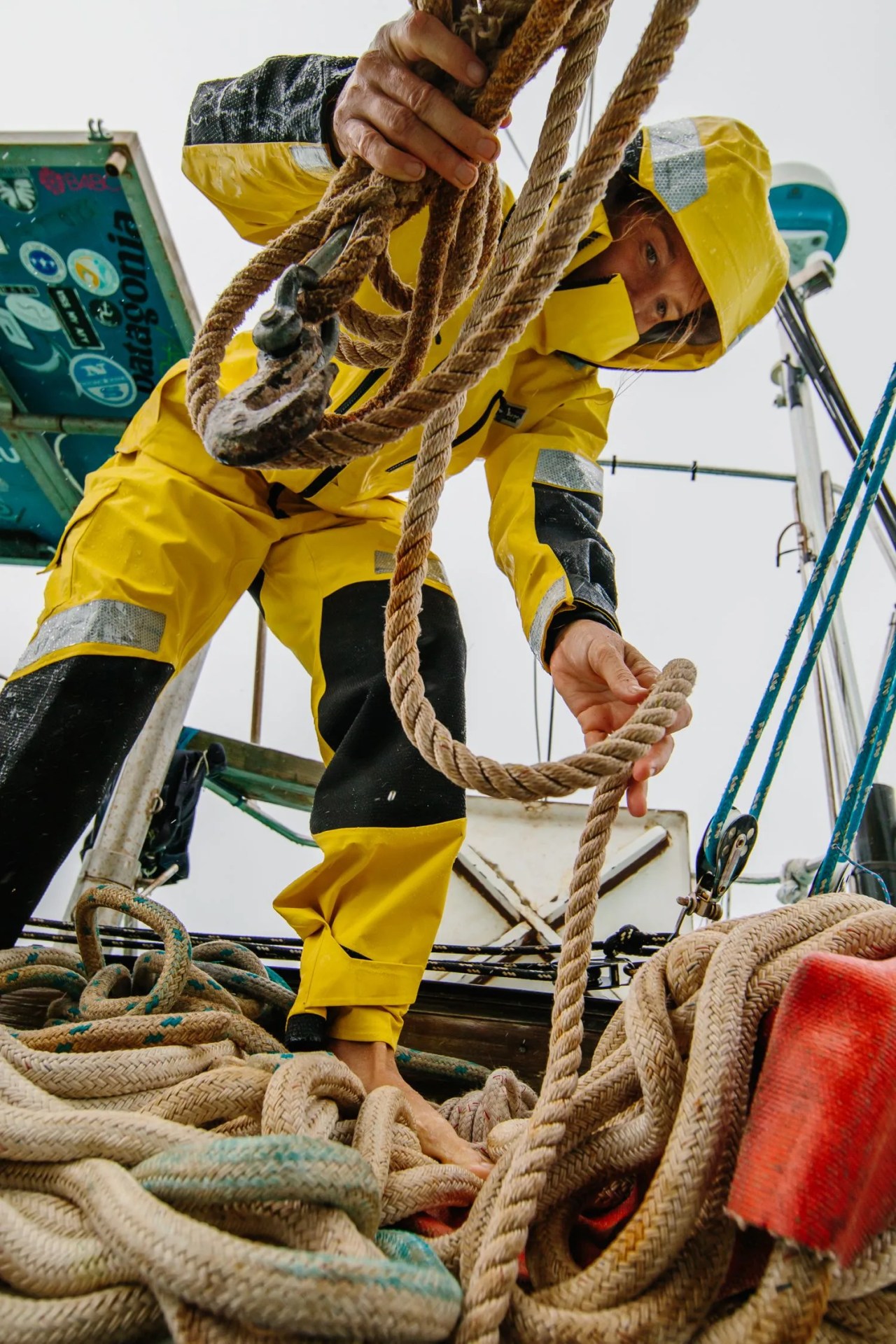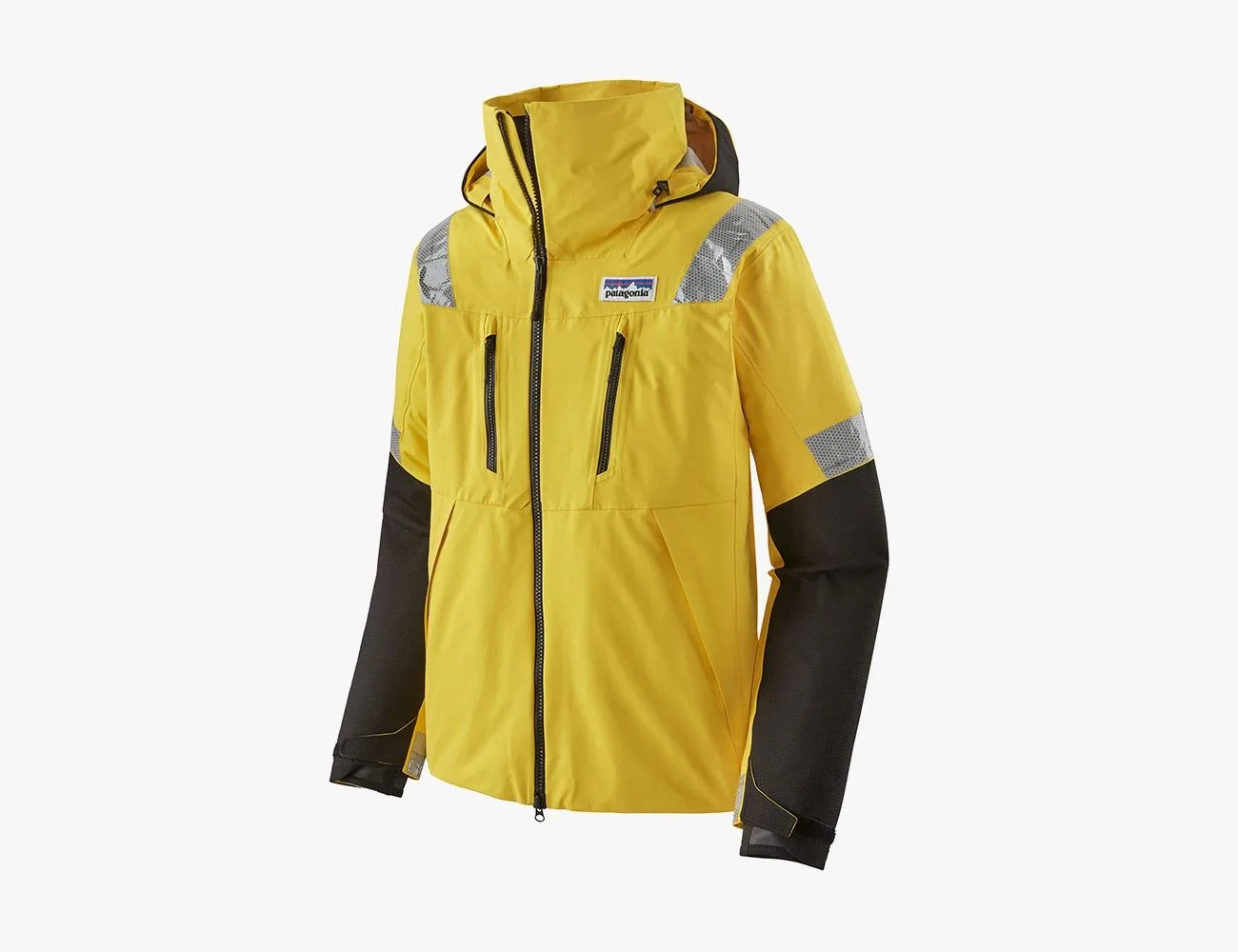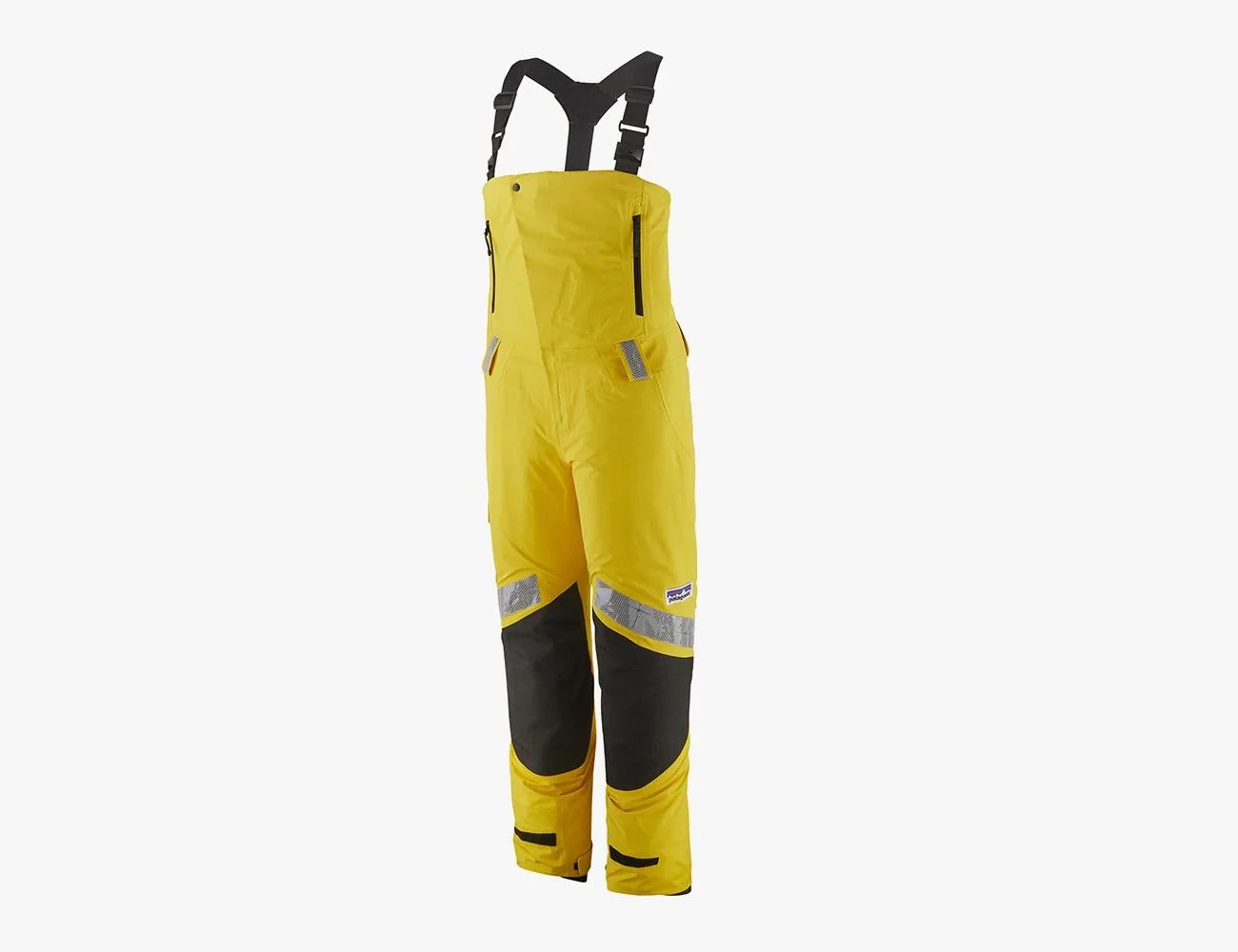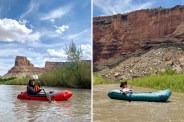As a brand, Patagonia rarely dips its toes in the water. The approach is typically either all-in, spearheading change on major issues like dam removal, regenerative agriculture and sustainable supply chains or holding off entirely. The brand is, to many of us, a barometer for the most pressing planetary issues of our time.
So, why spend eight years collaborating with a small non-profit on a niche sailing product?
“To talk about ocean health,” says Linden Mallory, Patagonia’s Global Product Line Director. “It is the next frontier of planetary health. Micro plastics, fisheries management, biodiversity. Their journey connects all the dots.”
Mallory is referring to the Moananuiākea, a 47-month circumnavigation of the Pacific Ocean by two traditional voyaging canoes, which set sail this past June. The Polynesian Voyaging Society (PVS) plans to sail its canoes, the Hōkūle’a and Hikianalia, over 43,000 miles using only traditional wayfinding methods, stopping in 345 communities across 36 countries to discuss facets of ocean health and share indigenous wisdom.
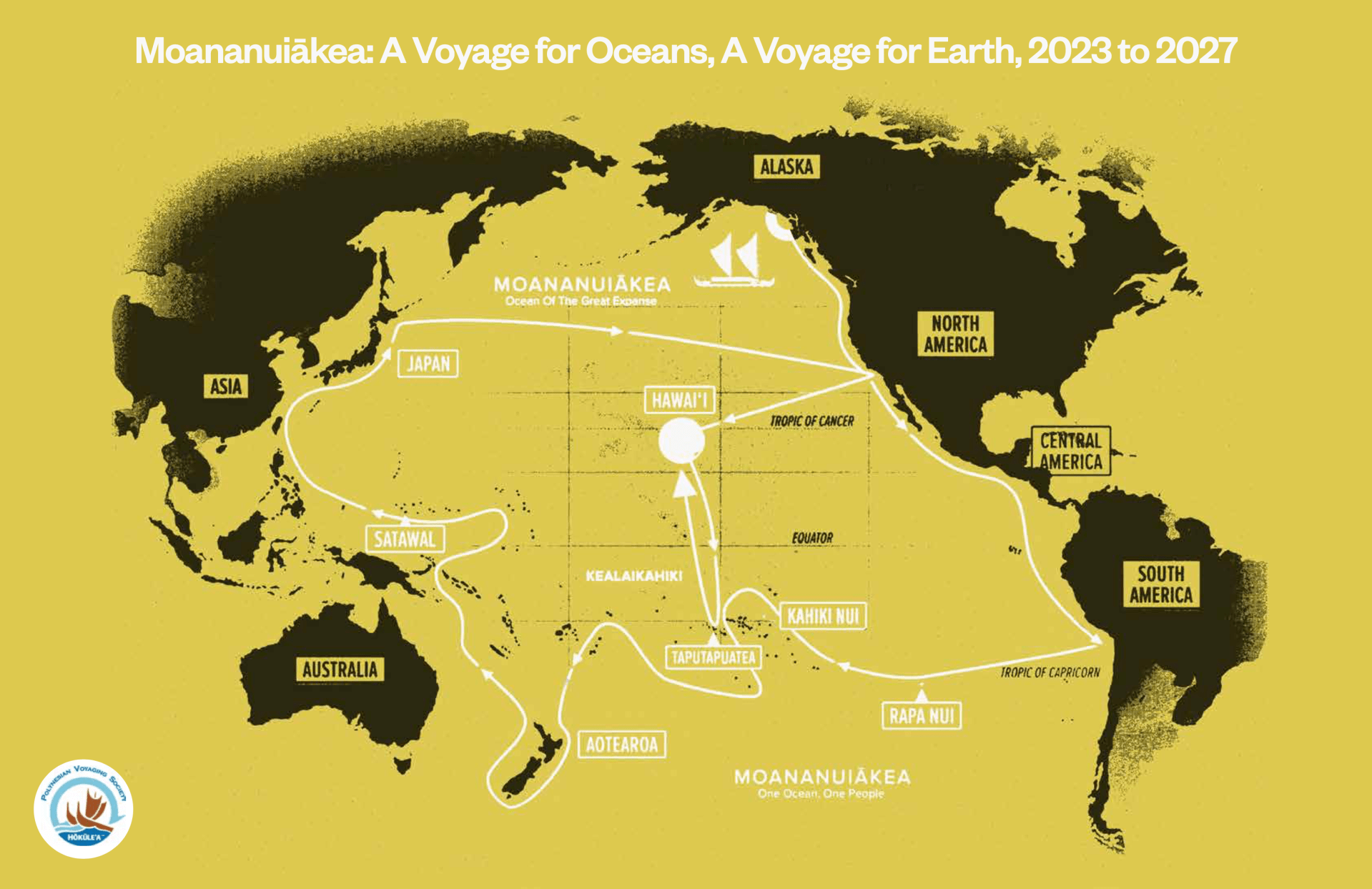
“Their values align perfectly with ours,” says Mallory. “We built the kit with care and craftsmanship, and are using it to talk about the Polynesian Voyaging Society and more broadly, ocean health. Their four-year sailing expedition without modern navigation is unbelievable. We wanted to be a small part of it.”
